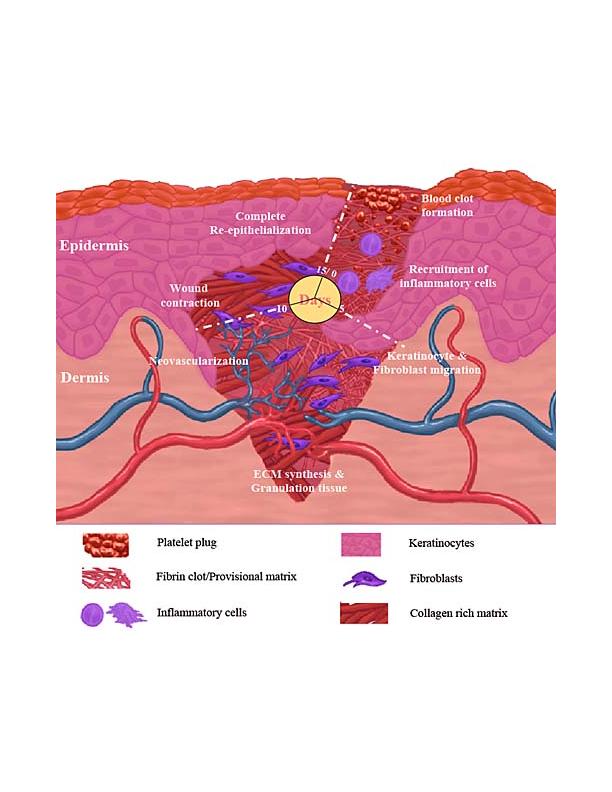Numerical
Analysis
John Adam
Department of Mathematics
Old Dominion University
Norfolk, Virginia 23529 USA
Presenter at Delft Symposium on Mathematical Modeling of Wound Healing

Date: October 15, 2009. Location Pegasuszaal (Pegasus Lecture Room),
Kluyverweg 6, Delft University of Technology, Delft, the Netherlands.
Abstract
"Waves" of healing, the critical size defect and keloid scars - some speculation
Two related models are presented for wound healing on a spherical surface. The first, and simplest model is based on a reaction-diffusion equation describing the process of healing as the inward growth of new cells from a circular wound on a spherical surface. Several aspects of the wound healing problem are considered: by interpreting the healing process as a "pseudowave" propagating across the spherical surface a heuristic account of the "speed" of healing is possible, and a corresponding upper bound on the healing time is characterized. Of particular importance in relation to animal models is the existence (or not) of a critical size defect (a CSD, defined below); this is discussed as a consequence of the stability of the steady states of the system to non-uniform spatial (or angular) perturbations. Explicit criteria are derived under which a CSD exists (within the model) in terms of the skull radius and wound radius. Although neither model explicitly distinguishes between wound healing in bone or tissue, it is in the former that CSD's are known to occur. The second model invokes a weighted spatial average cell density which permits the presence of both a short-range activation term (as in the first model) and a long-range inhibition term. Under these circumstances, within a suitable parameter range, the phenomenon of aggregation may occur in addition to the behavior predicted by the first model. It is speculated that such aggregation is manifested in the case of keloid scarring, which can occur as a result of wound healing in tissue.
[This is a condensation of material published in Discrete and Continuous Dynamical Systems B, 4 (2004) 1-24 and Mathematical and Computer Modelling, 35 (2002), 1085-1094.]
Back to home page of Delft Symposium
Last modified: August 9, 2009, by Fred Vermolen

